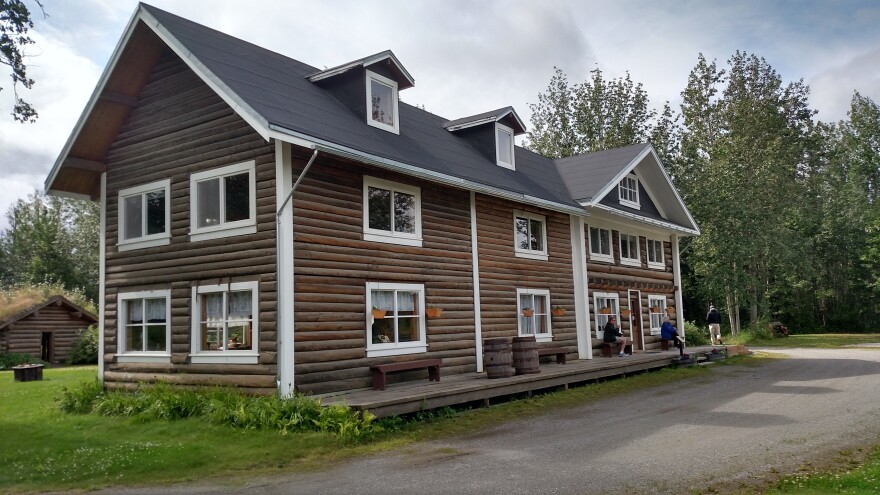Volunteers with State Parks and the Delta Historical Society have removed artifacts from a 110-year-old building at Big Delta State Historical Park. The agencies had planned to wait, to see if the Tanana River washed away more of the riverbank on which the building sits. But Sunday’s move was prompted by concerns over erosion accelerated by recent rains.
Delta Historical Society President Maureen Gardner says the group decided late last week to not wait for the erosion to cut to within 5 feet of the old structure that served as a living quarters for Signal soldiers a century ago. She says they decided instead to remove artifacts from the cabin-like structure as a precaution, before the rapidly eroding riverbank that’s now about 13 feet away creeps even closer.
“We got to the point where we just decided it was just best to take it, and get it out here right now,” she said. “We were highly concerned about how close the river is getting to the building, and how much erosion has occurred.”
Gardner says before they moved the artifacts, volunteers photographed how they were arranged so they can rebuild the displays that depict the everyday life of the soldiers who operated the Washington-Alaska Military Cable and Telegraph System, or WAMCATS, from 1907 to 1926.
“The membership of the Delta Historical Society, at our meeting on Thursday, decided to get it out right now, and not have to worry about having an emergency situation and jeopardize the integrity of all the historical artifacts,” she said.

Gardner says society members will now inventory the artifacts that are stored on the second floor of Rika’s Roadhouse, the main attraction at the parkabout eight miles north of Delta Junction. She says the erosion also threatens a stretch of trail that runs along the river. State Parks has barricaded about 300 feet of the trail, and Gardner says a local Parks worker had to close a bit more over the weekend.
“Yesterday, she had to move the barrier back another two feet,” Gardner said.

The Prospector’s Trail was used by gold miners around the turn of the previous century to access claims up the Goodpaster River.
“The Shushanna Gold Rush, in 1913 I believe that was – this is the trail that they used,” she said.
The Prospector’s Trail intersects with the larger Fairbanks-to-Valdez Trail, the basic route along which the Richardson Highway was built.
State Parks has applied for a $700,000 federal transportation grant that would pay for erosion-proofing the bank along which the trail runs. That also would protect the historic structure. State Parks Superintendent Brooks Ludwig says he’ll know by the end of the month whether the feds will award the grant.
Ludwig says the grant will require a $140,000 local match. He says the agency can’t afford that, because of Alaska’s budget crisis, so he’s planning to launch a 30-day online crowdfunding drive on Aug. 23. He says the agency will soon begin promoting the fund-raiser.
“We’re going to have it on our Facebook page,” he said, “we’ll have it on our website, we’ll have it on our Twitter account.”
Ludwig says if State Parks doesn’t get the grant, the agency will use proceeds from the crowdfunding to pay for stopgap erosion-proofing on the riverbank and, if needed, for moving the historic structure farther away from the river.



